Transmission Shift Interlock Solenoid
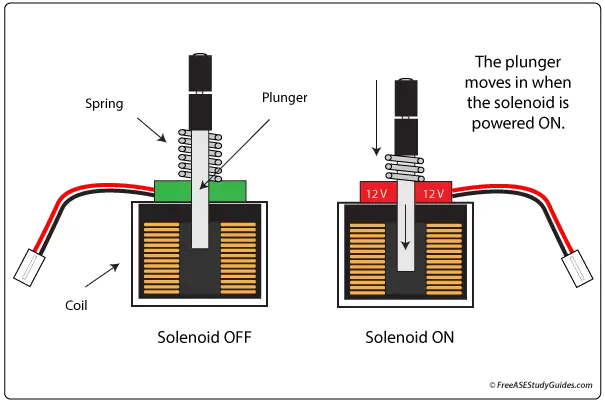
Solenoids convert electrical energy into mechanical motion. They contain an electromagnet that moves a metal plunger. The electromagnet in the solenoid above pulls the plunger in when powered on.
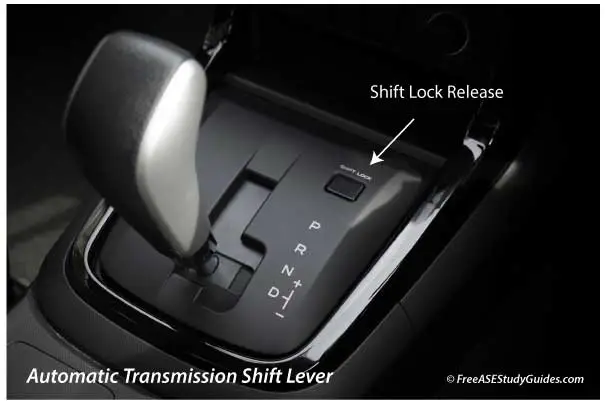
As current passes through the coil of wire, a magnetic field pulls the iron plunger in, allowing the shifter to be shifted out of PARK.
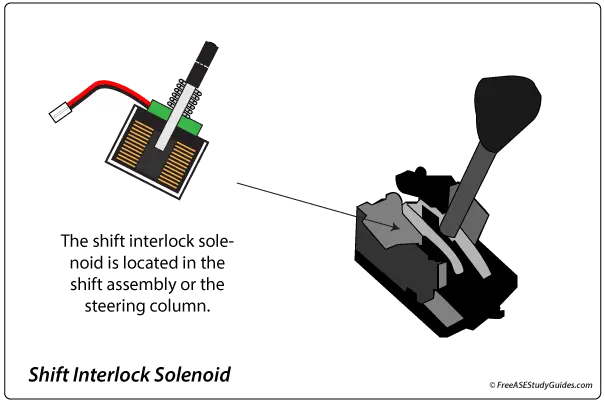
The shift interlock solenoid is a member of the shifter assembly in the center console or the steering column. It locks the shifter in PARK until the brake pedal has been depressed.
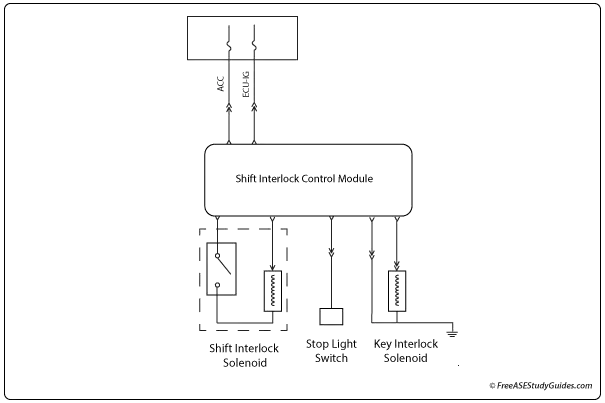
The shift interlock controller powers the shift interlock solenoid only after the brake pedal has been depressed. If the shifter does not shift out of PARK, check brake light operation to rule out the stoplight fuse and the brake switch as the cause.
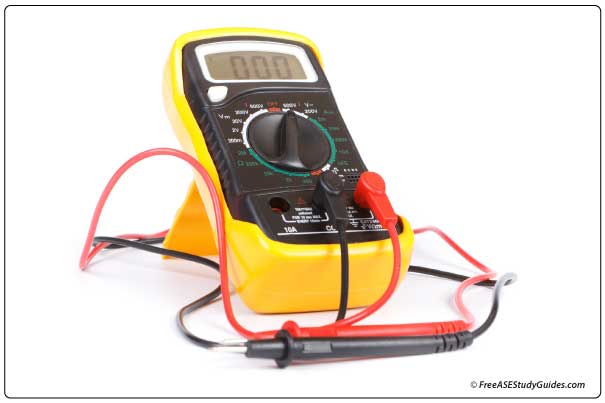
Most shifters have a shift lock release button that bypasses the solenoid. If bypassing the solenoid works, check that the solenoid receives voltage from the controller and test the solenoid for resistance with an ohmmeter. The solenoid should pull the plunger in when powered ON.